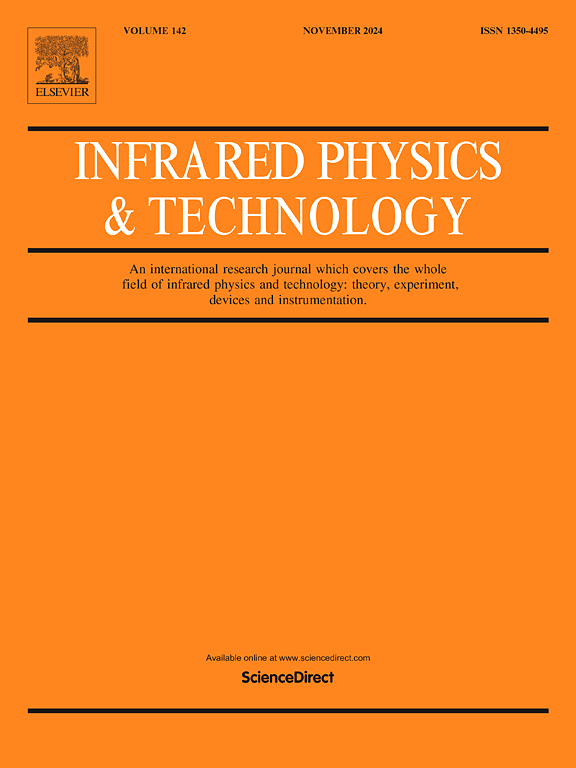Infrared small target detection based on multi-directionality and sparse low-rank recovery
IF 3.1
3区 物理与天体物理
Q2 INSTRUMENTS & INSTRUMENTATION
引用次数: 0
Abstract
Infrared small target detection plays an important role in diverse fields, while complex backgrounds make it hard to identify targets accurately. In this paper, we propose a novel method to handle the impact of complex backgrounds. First, we analyze the infrared small target images and model this task as a constrained optimization problem by utilizing the sparsity and multi-directional intensity spread of target images, the self-similarity of background images. By modeling the characteristics of images, mathematical constraints are proposed to enhance targets. Second, we propose Multi-directionality and Sparse Low-rank Recovery (MDLR) method. On the basis of Principal Component Analysis, the algorithm considers characteristics of infrared small target images to detect targets accurately. Finally, we solve the proposed optimization objective function by alternating direction method of multipliers. Comprehensive evaluations on real data sets show that MDLR achieves a balance detection performance of target enhancement, background suppression and computational efficiency in complex backgrounds.
基于多方向性和稀疏低秩恢复的红外小目标检测
红外小目标检测在多个领域发挥着重要作用,但复杂的背景给目标的准确识别带来困难。本文提出了一种处理复杂背景影响的新方法。首先,对红外小目标图像进行分析,利用目标图像的稀疏性和多向强度扩散、背景图像的自相似性,将该任务建模为约束优化问题;通过对图像特征的建模,提出数学约束对目标进行增强。其次,我们提出了多方向稀疏低秩恢复(MDLR)方法。该算法在主成分分析的基础上,考虑红外小目标图像的特点,实现目标的准确检测。最后,采用乘法器交替方向法求解所提出的优化目标函数。对真实数据集的综合评价表明,MDLR在复杂背景下实现了目标增强、背景抑制和计算效率的平衡检测性能。
本文章由计算机程序翻译,如有差异,请以英文原文为准。
求助全文
约1分钟内获得全文
求助全文
来源期刊
CiteScore
5.70
自引率
12.10%
发文量
400
审稿时长
67 days
期刊介绍:
The Journal covers the entire field of infrared physics and technology: theory, experiment, application, devices and instrumentation. Infrared'' is defined as covering the near, mid and far infrared (terahertz) regions from 0.75um (750nm) to 1mm (300GHz.) Submissions in the 300GHz to 100GHz region may be accepted at the editors discretion if their content is relevant to shorter wavelengths. Submissions must be primarily concerned with and directly relevant to this spectral region.
Its core topics can be summarized as the generation, propagation and detection, of infrared radiation; the associated optics, materials and devices; and its use in all fields of science, industry, engineering and medicine.
Infrared techniques occur in many different fields, notably spectroscopy and interferometry; material characterization and processing; atmospheric physics, astronomy and space research. Scientific aspects include lasers, quantum optics, quantum electronics, image processing and semiconductor physics. Some important applications are medical diagnostics and treatment, industrial inspection and environmental monitoring.

 求助内容:
求助内容: 应助结果提醒方式:
应助结果提醒方式:


